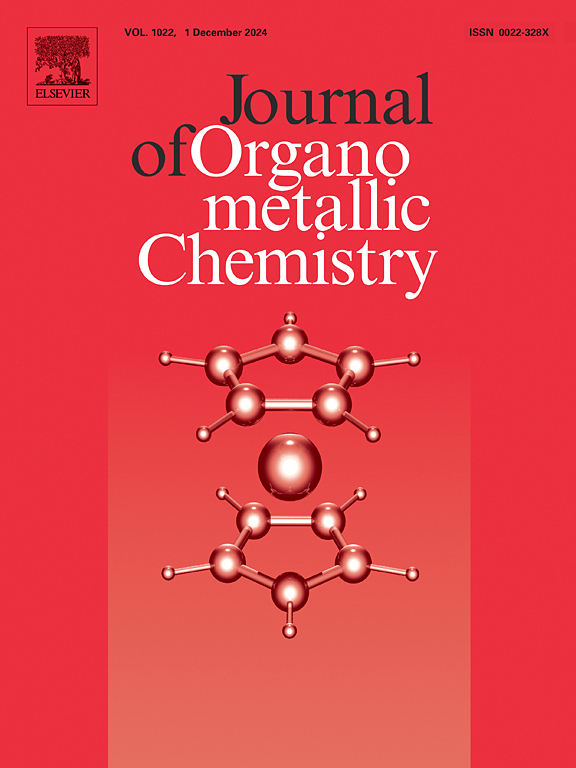锌基金属有机框架的创新途径:有机染料降解的合成、表征和光催化效率
IF 2.1
3区 化学
Q3 CHEMISTRY, INORGANIC & NUCLEAR
引用次数: 0
摘要
金属-有机框架材料是一种很有前途的光催化材料,特别是在降解废水中的有机染料方面。本文对锌基MOFs (Zn-MOFs)进行了综述,重点介绍了锌基MOFs的合成、表征及其光催化降解污染物的机理。对zn - mof光催化降解机制的详细研究强调了关键步骤,包括光吸收,电子-空穴对形成,电荷分离和反应性自由基产生,这些步骤共同驱动有效的污染物分解。在光催化效率的背景下,探讨了zn - mof的独特结构和化学性质,如高表面积、可调带隙、有机连接剂和金属节点的协同作用。讨论了关键的合成方法-水热,溶剂热和微波辅助技术-以及表征方法,如x射线衍射(XRD), brunauer - emmet - teller (BET)分析和UV-Vis光谱,这些方法阐明了zn - mof的结构,表面和光学性质。分析了影响光催化性能的因素,如染料浓度、pH、光催化剂用量和温度,以优化其应用。通过与其他MOFs的比较分析,强调了Zn-MOFs的优势和局限性,并指出了当前面临的挑战和未来的发展方向,强调了其在可持续水净化和环境修复方面的潜力。本文章由计算机程序翻译,如有差异,请以英文原文为准。

Innovative pathways in Zn-based metal-organic frameworks: Synthesis, characterization, and photocatalytic efficiency for organic dye degradation
Metal-organic frameworks (MOFs) are promising materials for photocatalytic applications, particularly in degrading organic dyes in wastewater. This review focuses on zinc-based MOFs (Zn-MOFs), emphasizing their synthesis, characterization, and photocatalytic mechanisms in pollutant degradation. A detailed examination of Zn-MOFs photocatalytic degradation mechanisms highlights critical steps, including light absorption, electron-hole pair formation, charge separation, and reactive radical generation, which collectively drive efficient pollutant breakdown. The unique structural and chemical properties of Zn-MOFs, such as their high surface area, tunable bandgap, and coordinated action of organic linkers and metal nodes, are explored in the context of their photocatalytic efficiency. Key synthetic methods–hydrothermal, solvothermal, and microwave-assisted techniques–are discussed alongside characterization approaches like X-ray diffraction (XRD), Brunauer–Emmett–Teller (BET) analysis, and UV–Vis spectroscopy, which elucidate the structural, surface, and optical properties of Zn-MOFs. Factors influencing photocatalytic performance, such as dye concentration, pH, photocatalyst dosage, and temperature, are analyzed to optimize their application. A comparative analysis with other MOFs underscores the strengths and limitations of Zn-MOFs, while the conclusion addresses current challenges and future directions, emphasizing their potential in sustainable water purification and environmental remediation.
求助全文
通过发布文献求助,成功后即可免费获取论文全文。
去求助
来源期刊

Journal of Organometallic Chemistry
化学-无机化学与核化学
CiteScore
4.40
自引率
8.70%
发文量
221
审稿时长
36 days
期刊介绍:
The Journal of Organometallic Chemistry targets original papers dealing with theoretical aspects, structural chemistry, synthesis, physical and chemical properties (including reaction mechanisms), and practical applications of organometallic compounds.
Organometallic compounds are defined as compounds that contain metal - carbon bonds. The term metal includes all alkali and alkaline earth metals, all transition metals and the lanthanides and actinides in the Periodic Table. Metalloids including the elements in Group 13 and the heavier members of the Groups 14 - 16 are also included. The term chemistry includes syntheses, characterizations and reaction chemistry of all such compounds. Research reports based on use of organometallic complexes in bioorganometallic chemistry, medicine, material sciences, homogeneous catalysis and energy conversion are also welcome.
The scope of the journal has been enlarged to encompass important research on organometallic complexes in bioorganometallic chemistry and material sciences, and of heavier main group elements in organometallic chemistry. The journal also publishes review articles, short communications and notes.
 求助内容:
求助内容: 应助结果提醒方式:
应助结果提醒方式:


